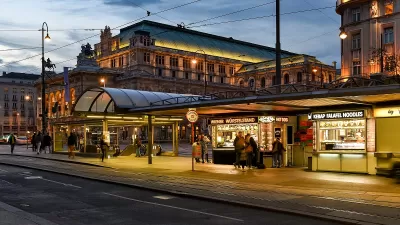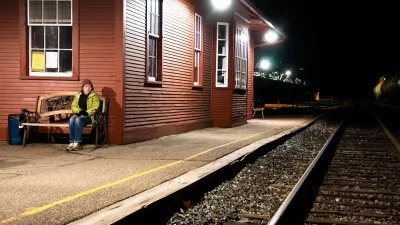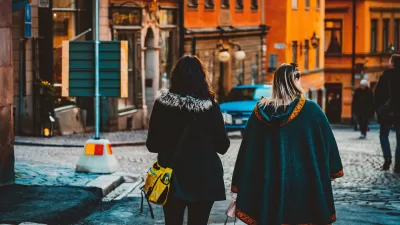An argument for embedding a feminist analysis into planning practice.

Women and other marginalized groups experience cities differently, writes Marion Roberts. "Experiences of sexual harassment and violence intersect with other social inequalities, especially those of class, race, disability and sexual orientation. To track all of these indicators through an urban planning and design agenda can be bewildering, drawing attention away from deep-seated, long-standing 'structures' of inequality that become embedded in the built environment and in the mindsets of politicians and planners."
Roberts calls for "A socialist-feminist approach [that] cuts through this technical complexity by demanding that the work of reproduction, of caring work and domestic responsibilities, typically undertaken by women and girls, be recognised and valued in equal measure to that of production. "
The article provides examples from several international cities that have implemented planning interventions using this approach. Vienna, the only city to fully embrace the concept, "takes accommodating the strains of reconciling waged work, housework and caring responsibilities as a central tenet of its planning strategy. Its development plan is based on a 'city of short distances' and providing for everyday life."
For example, the new urban extension to Vienna, Aspern Seestadt, connects its projected 20,000 households to Vienna city centre with a fast metro link, and includes different employment opportunities within the urban extension, as well as sufficient schools, nurseries, medical services, Austria’s first managed high street, hospitality and leisure facilities, facilities for refugees and a new urban park around the lake.
"In Mexico City, a programme entitled 'Safer Streets, Safer Trails' targeted at women has introduced better lighting, security cameras and alarm buttons over 200 kilometres of streets and paths. Combined with other improvements to public spaces, this has reduced street crime against women by 29 per cent and raised perceptions of safety in the period 2018-2021 by 40 per cent," Roberts writes.
Far from just improving the lives of urban women, Roberts argues that this approach to building cities can ensure fair and equitable access to amenities and economic opportunities for everyone.
FULL STORY: Building feminist cities

Planetizen Federal Action Tracker
A weekly monitor of how Trump’s orders and actions are impacting planners and planning in America.

Chicago’s Ghost Rails
Just beneath the surface of the modern city lie the remnants of its expansive early 20th-century streetcar system.

San Antonio and Austin are Fusing Into one Massive Megaregion
The region spanning the two central Texas cities is growing fast, posing challenges for local infrastructure and water supplies.

Since Zion's Shuttles Went Electric “The Smog is Gone”
Visitors to Zion National Park can enjoy the canyon via the nation’s first fully electric park shuttle system.

Trump Distributing DOT Safety Funds at 1/10 Rate of Biden
Funds for Safe Streets and other transportation safety and equity programs are being held up by administrative reviews and conflicts with the Trump administration’s priorities.

German Cities Subsidize Taxis for Women Amid Wave of Violence
Free or low-cost taxi rides can help women navigate cities more safely, but critics say the programs don't address the root causes of violence against women.
Urban Design for Planners 1: Software Tools
This six-course series explores essential urban design concepts using open source software and equips planners with the tools they need to participate fully in the urban design process.
Planning for Universal Design
Learn the tools for implementing Universal Design in planning regulations.
planning NEXT
Appalachian Highlands Housing Partners
Mpact (founded as Rail~Volution)
City of Camden Redevelopment Agency
City of Astoria
City of Portland
City of Laramie





























